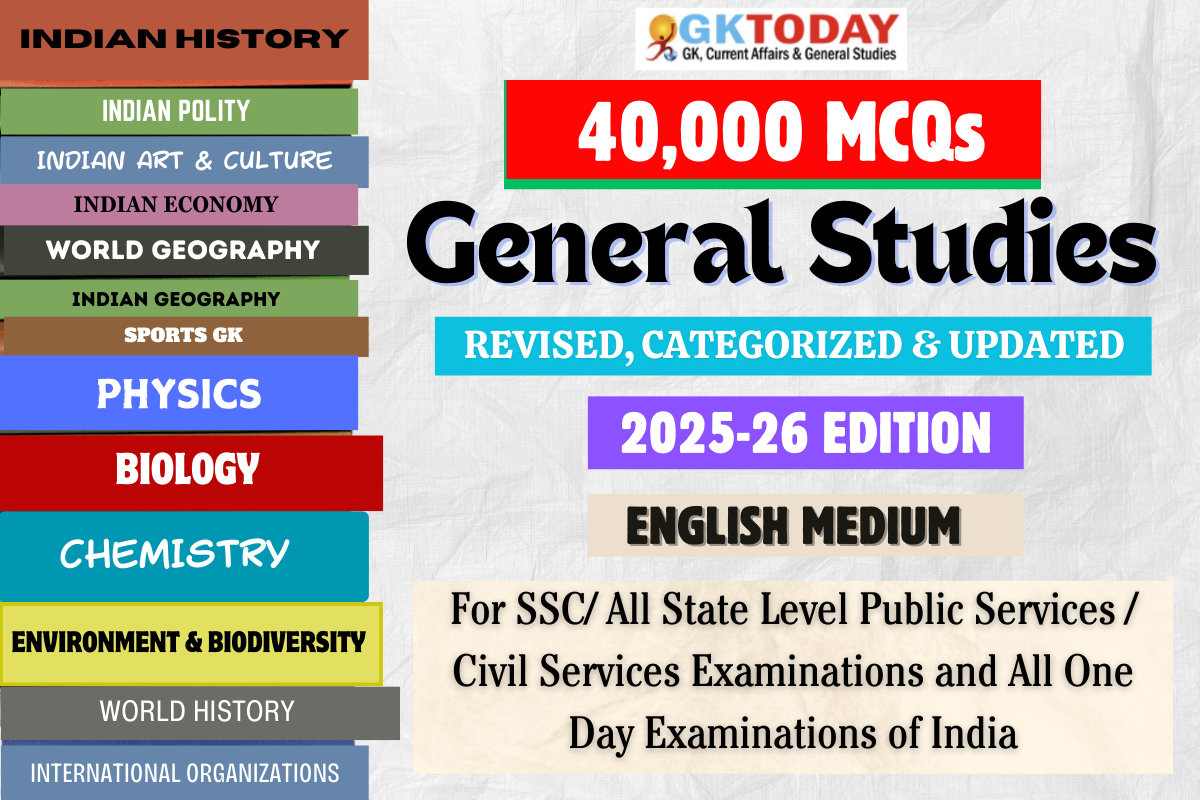Ancient Indian History MCQs
Multiple Choice Quiz Questions (MCQs) on Ancient Indian History for General Studies and GK preparation of SSC, NDA, CDS, UPSC, UPPSC and State PSC Examinations.
11. The famous Gayatri mantra is addressed to which of the following vedic goddess?
[A] Aditi
[B] Saraswati
[C] Savitri
[D] Laxmi
Show Answer
Correct Answer: C [Savitri]
Notes:
The Gāyatrī Mantra is also known as the Sāvitri Mantra. It is an important mantra from the Rig Veda dedicated to Savitri, the deity of five elements. Gāyatrī is the name of the Goddess of the Vedic Mantra in which the verse is composed.
12. Who among the following was the most important divinity during the early Vedic era?
[A] Agni
[B] Indra
[C] Vayu
[D] Varuna
Show Answer
Correct Answer: B [Indra]
Notes:
Some major deities of the Vedic tradition include Indra, Surya, Agni, Ushas, Vayu, Varuna, Vishnu, Mitra, Aditi, Yama, Soma, Sarasvati, Prithvi, and Rudra. Among all Indra is the most important god.
13. During end of which of the following period the urban centers of Gangetic planes declined ?
[A] Maurya Period
[B] Gupta Period
[C] Mahjnapadas
[D] Magadh Empire
Show Answer
Correct Answer: B [Gupta Period]
Notes:
The urban centers of Gangetic plain declined with the gupta empire. The areas surrounding Prayag, Saketa and Magadha areas have declined.
14. Which among the following emperors introduced the two laws of Vyavahar Samta and Danda Samata?
[A] Chandragupta Maurya
[B] Asoka
[C] Chandragupta Vikramaditya
[D] Samudragupta
Show Answer
Correct Answer: B [Asoka]
Notes:
By his Vyavahara-Samata, Asoka wanted to regard all his subjects equal in Law. And, by his Danda-Samata he wanted ‘equality of punishment’ irrespective of caste and creed.
15. What was the capital of the ancient Vatsa Mahajanapada?
[A] Mathura
[B] Bairath
[C] Kausambi
[D] Kashi
Show Answer
Correct Answer: C [Kausambi]
Notes:
Kausambi was the capital of the ancient Vatsa Mahajanapada, an important political and cultural center during the sixth and fifth centuries BC. Vatsa or Vamsa was one of the sixteen Mahajanapadas (large states) situated in Northern Ancient India, which was recognized for its significant contributions to the development of Buddhism and Jainism. This region attracted scholars and spiritual practitioners from far and wide, contributing immensely to the rich cultural tapestry of ancient India.
16. What is the vedic name of river Chenab?
[A] Bipasa
[B] Askini
[C] Satudri
[D] Chandni
Show Answer
Correct Answer: B [Askini ]
Notes:
Chenab River was called Asikni in the Rigveda. The name Asikni means “dark colored waters”. The Chenab River is formed by the confluence of the Chandra and Bhaga rivers at Tandi. It runs through the Jammu area of J&K and into Pakistan’s Punjab plains.
17. According to the archaeologists, which among the following sites of Indus Valley Civilization was probably abandoned because of an earthquake?
[A] Rakhigarhi
[B] Dholavira
[C] Kalibangan
[D] Banawali
Show Answer
Correct Answer: C [Kalibangan]
Notes:
Kalibangan was abandoned, perhaps due to an earthquake, but in the Mature Harappan period a new settlement was constructed.
18. With reference to the computation of the time, the audayika system and ardharaatrika system were devised by ___:
[A] Aryabhatta
[B] Varahmihira
[C] Brahamgupta
[D] Nagarjuna
Show Answer
Correct Answer: A [ Aryabhatta]
Notes:
Aryabahata was the first Indian astronomer to state that the Earth is spherical and rotates on its axis. He went on to explain that the apparent daily east- west motion of the sun, moon, planets, and stars is due to the rotation of the Earth from west to east. He introduced two systems for reckoning time: (1) the audayika system, from sunrise to next sunrise, and (2) the ardharaatrika system, that is, midnight to midnight (sidereal time). The time for one sidereal rotation of the Earth is given as 23h 56m 4.1s (modern value: 23h 56m 4.091s). Responsible for the Indian mathematical renaissance, Aryabhata set the pattern and tone of modern mathematical investigations.
19. Who among the following was called Lichchavi Dauhitra?
[A] Chandragupta
[B] Kumargupta
[C] Samudragupta
[D] None of the above
Show Answer
Correct Answer: C [ Samudragupta ]
Notes:
Samudragupta calls himself Lichchavi- dauhitra the son of the daughter of the Lichchavis. The Licchavis were a clan amongst the Vajji Mahajanapada of ancient India.
20. Which one of the following dynasty was well-known for excellent village administration?
[A] Pandyas
[B] Pallavas
[C] Cholas
[D] Chalukyas
Show Answer
Correct Answer: C [Cholas]
Notes:
The Chola kings followed a highly efficient system of administration. The entire Tanjore district, parts of Trichy, Pudukottai and South Arcot districts formed the part of’ the Chola Mandalam. The Cholas had three major administrative divisions called Central Government, Provincial Government and Local Government. Tanjore was the capital of the Cholas. The efficient Chola administrative system has been well appreciated by many historians and rulers.

